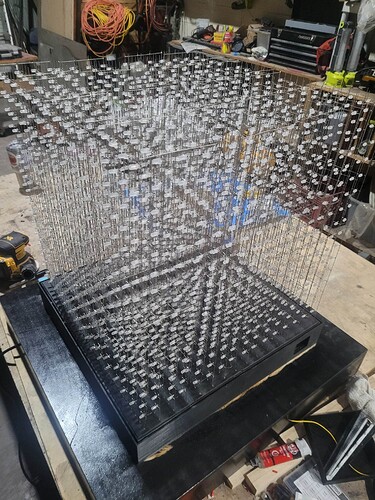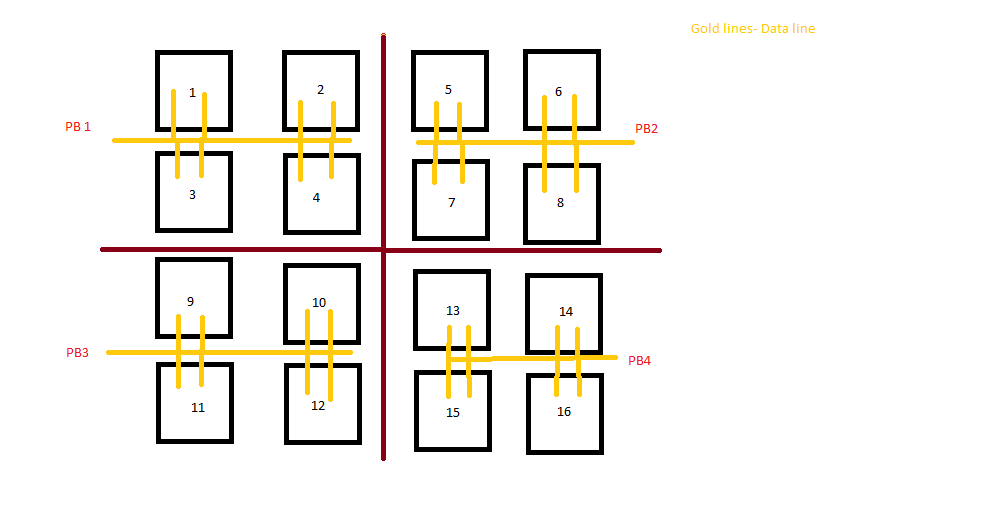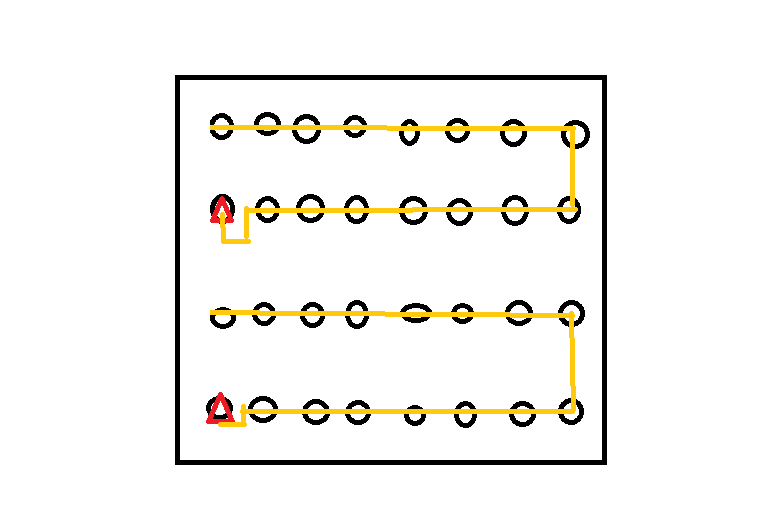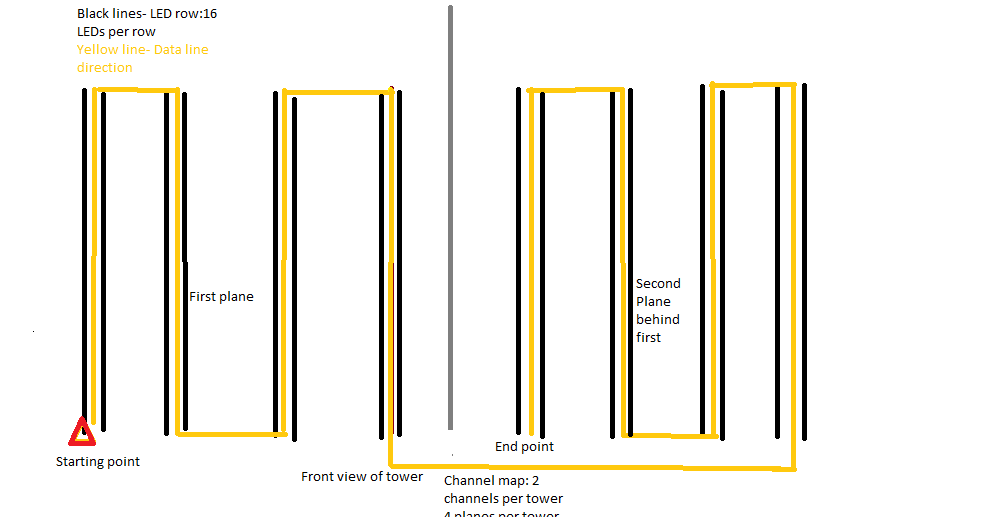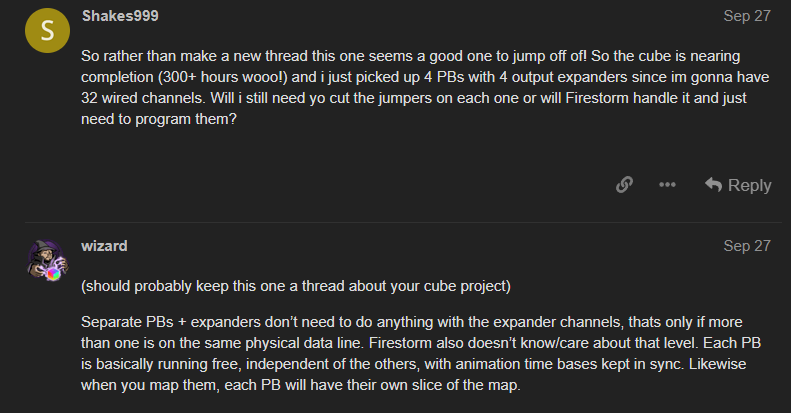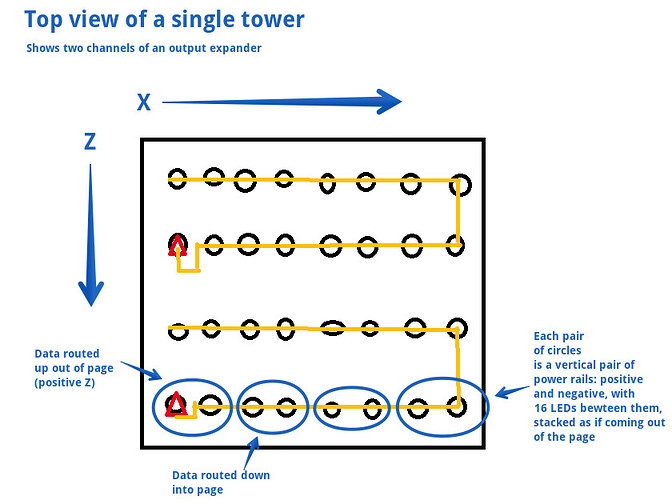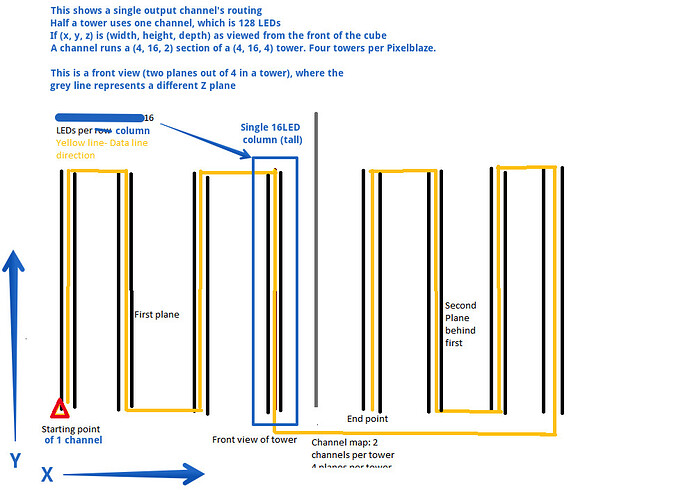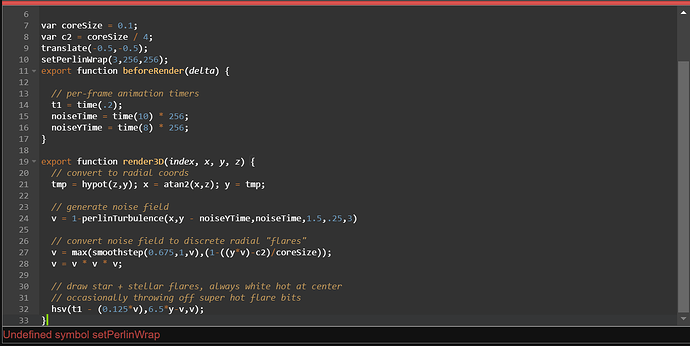So this will be the last cube post cause it’s functionally done. Here’s a bit of info behind it. Total hours are somewhere between 300-400. Who knows where in between. Total cost was 1800$ and would have been more if I hadn’t had a few friends that could give me a friend hook up on Acrylic, custom wood work, and 3D Printing. MaltWhiskey joked about not recommending making one of these and I have to agree with him. It was a second full time job from June until Mid-Oct. If I had kids and most adult obligations this probably would have taken a full year.
Anyways,I’m basing the mapping off of the one Ben nicely wrote for me last year, linked below, and I’m gonna attempt to map it myself but it’s MUCH more involved. Instead of 4 channels there’s 2 per tower and I’ve swapped the direction of the data wiring once it leaves the 1st plane around a bit but I’m at least semi-confident I can figure that portion of it out.
One question I DO have that I keep getting confused about is that I have 4 PBs running it and I’m going to have to get Firestorm to sync them but separating each one to run a different portion of the pattern. So I need to modify the mapping for each PB and modify the code for each pattern on every Pixelblaze? I’ve got some decent practice in with getting familiar with code on the PB and adjusting values but this is way more advanced than what I’ve been dealing with.
I’ve done a bit of research through the forums and I came across this thread and this is good information
Configuring multiple PBs
I see Jeffs code in there and that seems like the correct choice, modified for my own purposes of course but it’s still a little murky how to implement (to me, it’s actually explained really well but code is still a struggle with me and will be for a while) Anyways, rambled on enough and not sure what other questions to ask without more info. Thanks for keeping me company on the way!
